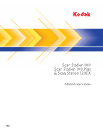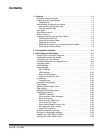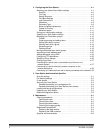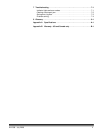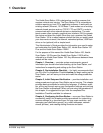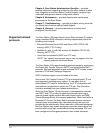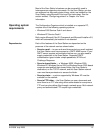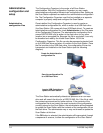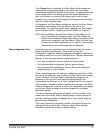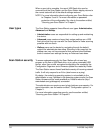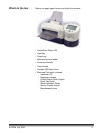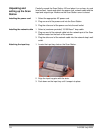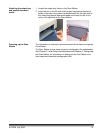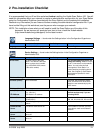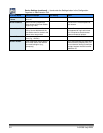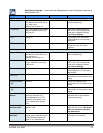
1-2 A-61588 July 2008
Chapter 5, Scan Station Administration Specifics — provides
detailed information regarding configuring your office network to allow
easy integration of the Scan Station, how to properly configure login
credentials and general network configuration details.
Chapter 6, Maintenance — provides cleaning and maintenance
procedures for the Scan Station.
Chapter 7, Troubleshooting — provides a problem solving chart that
you should refer to before calling Kodak Support.
Chapter 8, Glossary — provides descriptions for terms used
throughout this document.
Supported network
protocols
The Scan Station 100 plugs directly into an Ethernet-based IP network,
using a standard RJ45 connection, working independently within the
following environments:
• Microsoft Windows Server 2000 and Server 2003 (TCP/IP, MS
sharing, SMTP, FTP, Printing)
• NetWare 3.x and 4.x with MS services for NetWare (TCP/IP, MS
Sharing, SMTP, FTP)
• Unix/Linux environments (SMTP and FTP only)
NOTE: Your network environment may or may not support all of the
network protocols mentioned above.
The Scan Station 100 supports sending attached images by email using
the Simple Mail Transfer Protocol (SMTP) and authenticated SMTP
protocols. Methods supported for authenticated SMTP include: simple
password, NTLM and Challenge Response.
NOTE: Kerberos support is not included at this time.
Anonymous File Transfer Protocol (FTP) and authenticated FTP are
also supported, including proxy support. To use either form of
authenticated FTP (with or without proxy), the FTP configuration will
need sufficient credentials to access the FTP site. This information
should be available from your network administrator.
While the Scan Station 100 can be used in heterogeneous networks
with SMTP and FTP, printing to network printers and scanning to
network shared folders requires Microsoft printer drivers and SMB
(Server Message Block) drive access respectively. When used within a
Microsoft NT Domain, the Scan Station accesses domain resources
(shared drives and printers) with a standard domain user account,
provided by the administrator. When used within a Microsoft workgroup,
the Scan Station may access workgroup resources (share drives and
printers) without any login credentials providing workgroup PCs have
been configured to allow guest access to their shared resources.



